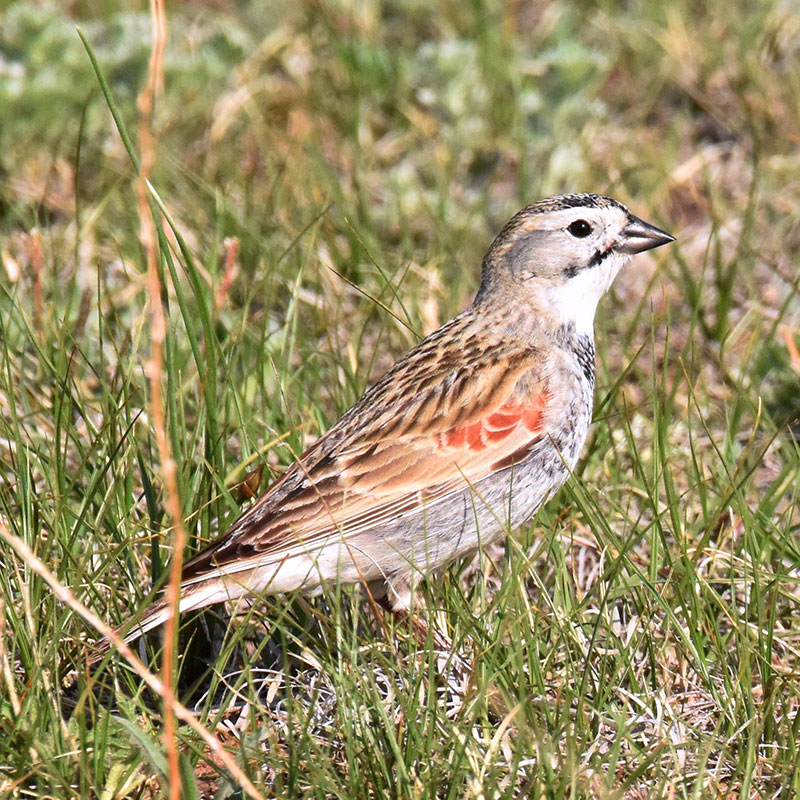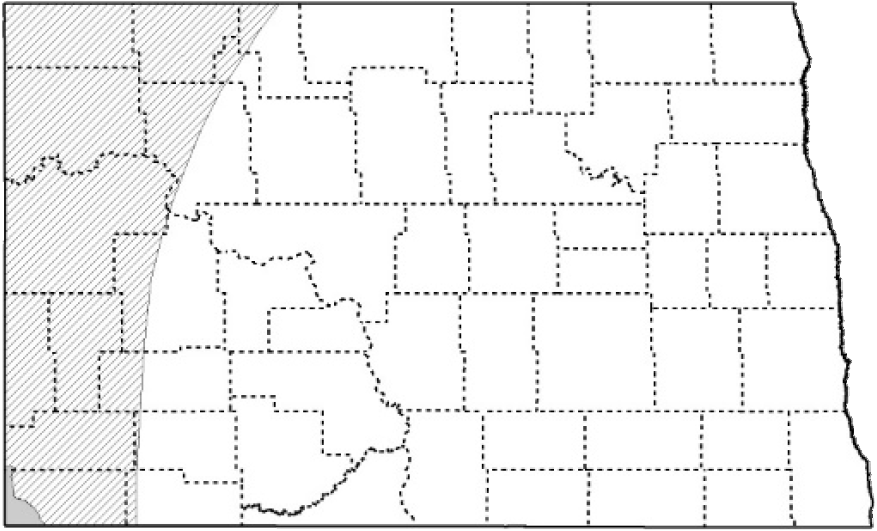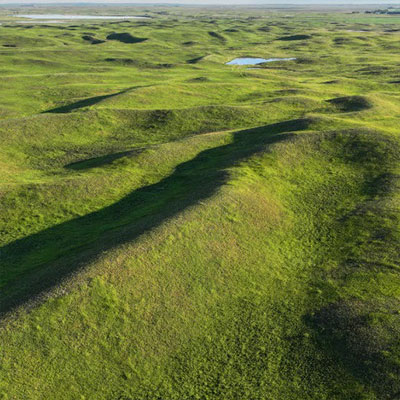Thick-billed Longspur

Adobe Stock
L 6”, WS 11”, 0.81 oz. Male is gray overall with a white neck, crescent-shaped black patch on chest, and rufous shoulders. Female is light brown. Black “T” on white tail.
Status in North Dakota
Possibly extirpated. Occurs in North Dakota from mid-April to September. Peak breeding season late May to mid-July.
Reason for SWAP Designation
Regionally and globally imperiled (SGCN a.).
The Thick-billed Longspur is declining precipitously, and the population has decreased 94% since 1970.
Prior to European settlement of North Dakota, Thick-billed Longspur was rather common over the western half of the state.
From 1905-1930, the species declined rapidly, and the breeding range constricted substantially.
This species is at imminent risk of extirpation from North Dakota.
Threats
Loss of grassland.
Specifically, the loss of expansive, native shortgrass prairie habitat.
Loss of ranching heritage and grass-based operations, grazing is essential to grassland health and diversity.
Classified as climate-endangered, Thick-billed Longspur is projected to lose more than half of its current distribution by 2050, with no net gains of new areas (Audubon).
Research and Monitoring
Habitat requirements and demographic studies have been broadly researched on the breeding grounds.
Additional information is needed on migration and wintering behaviors.
The Breeding Bird Survey, eBird and Partners in Flight Databases are key sources of information on distribution and population trends.
Management Recommendations
- Protect and conserve large, intact tracks of native shortgrass prairie/unbroken grassland.
- Reconstruct or restore grassland adjacent to existing tracts of native prairie/unbroken grassland.
- Use native grasses when replanting or restoring grassland.
- Promote well-managed grazing lands and working grasslands for biodiversity, sustainability, and resiliency.
- Prevent or remove shrubs and tall woody vegetation in grasslands, either mechanically or by prescribed fire.
- Use prescribed burns in areas where fire has been suppressed.
- Avoid or minimize placement of development (e.g. energy, housing, utility lines) or other human infrastructure in native prairie/unbroken grassland.
- Follow beneficial or best practices during the design, siting, construction, operation, and maintenance of tall structures (e.g. transmission lines, communication towers, wind turbines).



